
Tina Flowers holds a photo of her son Spenser from his junior year of high school. (Photo by Ryan Loew/PublicSource)
Jan. 25, 2021

Tina Flowers holds a photo of her son Spenser from his junior year of high school. (Photo by Ryan Loew/PublicSource)
Over the summer, PublicSource reported that the number of drug overdoses and overdose deaths in Allegheny County was rising again.
The increase started before the pandemic, but experts said the coronavirus was making the opioid epidemic worse. We reported on what the new surge in overdoses looked like from the eyes of recovery workers who were trying to adapt to the new challenges.
And, in December, the Centers for Disease Control and Prevention confirmed just how widespread the recent spike in overdoses has become in the United States. In a 12-month period ending in May 2020, more than 81,000 Americans died of drug overdoses. It is the highest number ever in a one-year period. Although information on overdoses is delayed by months in Allegheny County, there are already 492 confirmed deaths in 2020 — as many as in all of 2018.
We talked to five people in the Pittsburgh area who have had to reckon with addiction during the pandemic, either because they are struggling themselves or because their loved ones have suffered through it. They shared stories of a crisis within a crisis.
(PublicSource chose not to use the last names of some people who shared their stories to protect their privacy.)
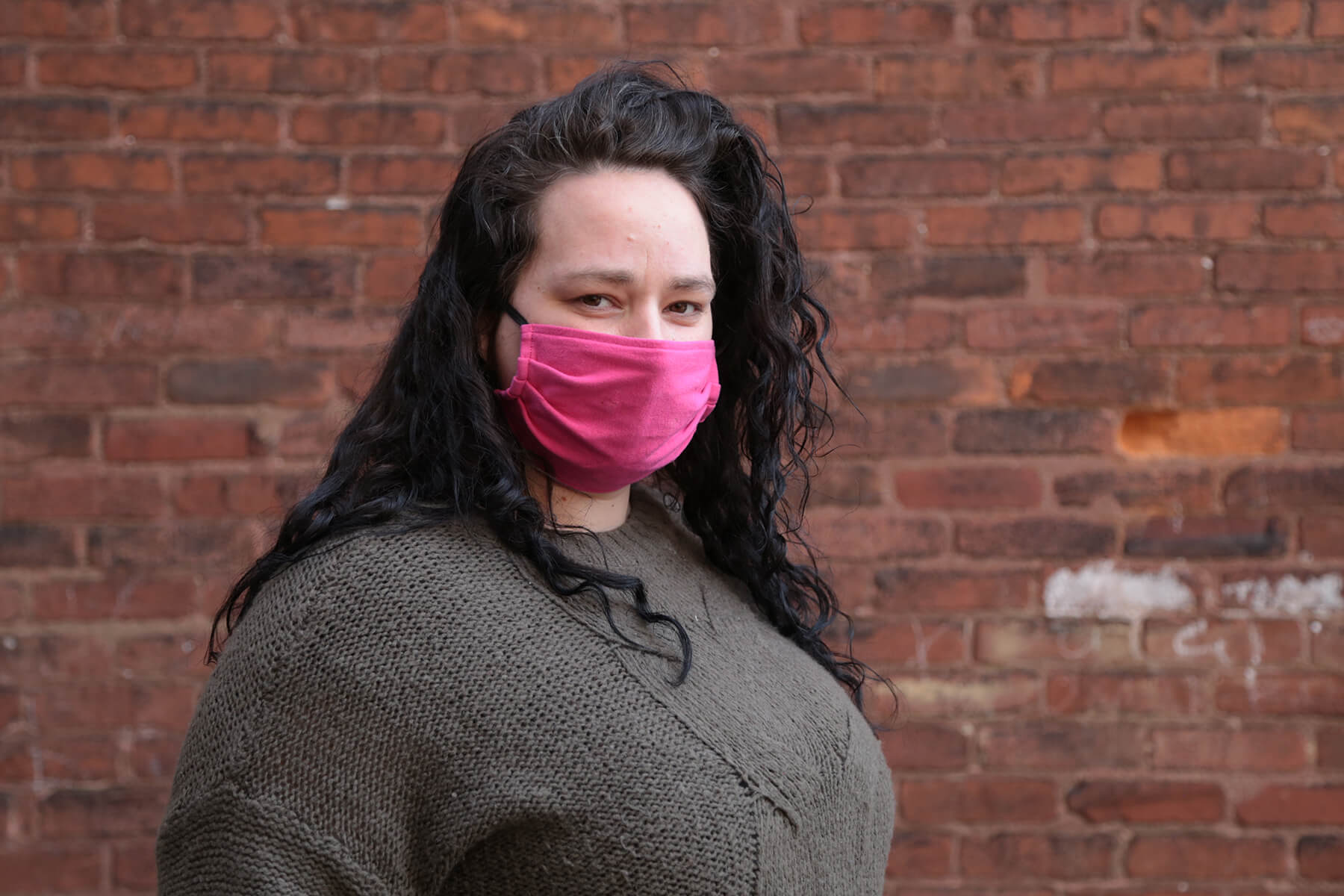
Amber J. photographed outside her home in January. (Photo by Ryan Loew/PublicSource)
“They call it ‘getting well’ because honestly dope sickness is the worst pain ever, and I’ve had five children,” she said.
At the time, Amber, who is in her 30s, was still living with her two youngest sons in an apartment with a clogged toilet, a broken stove, bed bugs and a missing front door. The police had kicked the door in to arrest her boyfriend for selling drugs four months earlier, and the door had never been replaced.
Her shift at the nursing home started at 7 a.m., but she had lost her phone and she didn’t know what time it was. She hurried to strap the boys into her 2004 Mercury.
Related - Holding on to love: One Pittsburgh story of coping with loss amid rising opioid overdoses
Next thing she knew, she had rammed her car into a small bridge, but, because she was high, she kept driving for 3 miles. The wiring under her car ripped out, and the horn wouldn’t stop blaring. She took her sons out of the car and started walking to the babysitter. By the time she had enough sense to return to her car, the police were there to arrest her.
Just months earlier, on Dec. 5, 2019, Amber had lost what would’ve been her sixth child during childbirth, leading to her spiral on heroin. Her 26-year-old sister had died of an opioid overdose a few months before that.
Her mom, who was already raising Amber’s teenage daughter, told her that she was done bailing her out unless she went into rehab. So Amber detoxed at her mom’s house and entered a rehab program for 28 days.

Amber J. walks outside with her 5-year-old son Laron. “My mom always said if you do the right thing, God will bless you,” she said. “And it’s finally looking up.” (Photo by Ryan Loew/PublicSource)
After 28 days of getting clean after the car accident, she transferred to Familylinks, where her two sons could move in with her. Recovery was hard on her sons. Because it was a pandemic, she said they couldn’t leave the building except to go to doctor’s appointments. Eventually, she earned the privilege to occasionally go to the grocery store.
In October, she transferred to Sojourner House Moms, where she could come and go on her own and use a cellphone, as long as she attended recovery meetings. Within a week of moving in, she and her kids tested positive for COVID-19. They had to quarantine for a month.
Amber’s been spending the days helping her kids with their school work. Her kids received new bikes and tablets over Christmas from an organization that supports mothers in recovery. These gifts allowed her to save her second stimulus check. The first stimulus check, she spent on drugs. With the recent money, she’s taken her kids to get haircuts, toys and clothes. It never would have happened when she was using.
And in another turn of fortune: She recently had $250 worth of groceries at the store checkout, when the woman in front of her, anonymously, paid $100 toward her bill.
“My mom always said if you do the right thing, God will bless you,” she said. “And it’s finally looking up.”
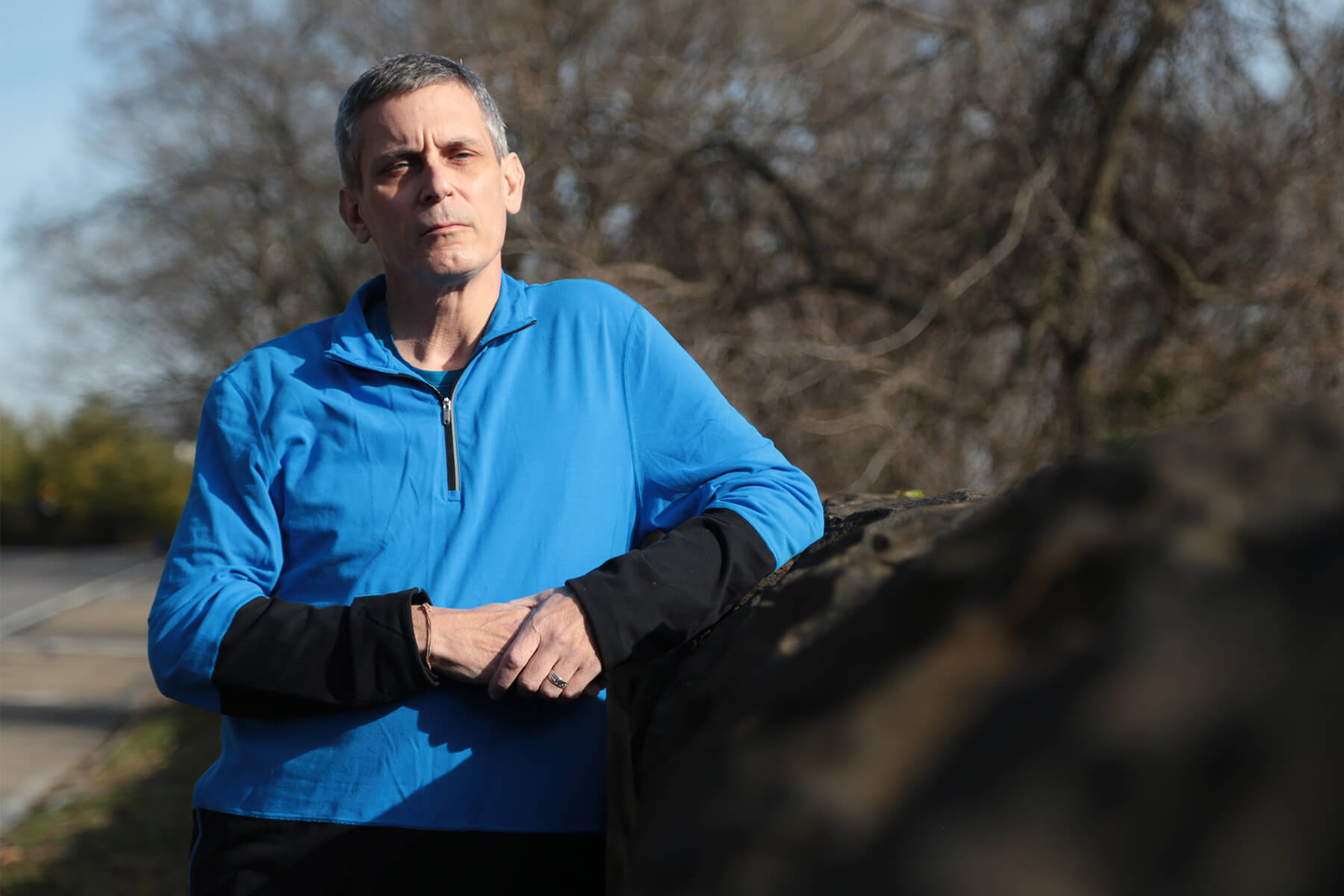
James B., photographed in December 2020. (Photo by Ryan Loew/PublicSource)
The hospital prescribed him opioids after surgery, but James told them he didn’t want any. They gave him ketamine to help get him through the pain.
Then his 5-year-old grandson, who was born with only one good heart valve, died June 27. James hadn’t been allowed to see his grandson because of COVID-19. He hadn’t had a desire to use opioids for several years, but now the feeling had returned.
“Our minds will make it sound good: ‘Remember how good this felt,’” he said. “We have an enemy inside us that speaks to us in our own voice, this demon that lives inside of us.”
James became a welder as a teenager and noticed that his coworkers didn’t seem as worn down by the job when they took oxycodone pills. He had already used several other drugs, so why not opioids? He ran out of pills one time on a job and realized he was addicted.
On Sept. 2, 2011, he overdosed on seven Xanax pills, which he used regularly with methadone, and lost the feeling on one side of his body. His heart stopped beating and he had a vision of himself hovering over the hospital before he was brought back to life.
He tried to run through some police officers who were attempting to arrest him soon after his overdose, and he was taken in for a month for assaulting an officer. He became extremely sick from not having any methadone and lost 45 pounds from not eating.
That was what finally got him to take his recovery seriously, though he had a couple lapses before becoming sober for more than four years.
After the motorcycle accident, he was faced with the need for painkillers again just as he was mourning his grandson.
“What kind of piece of shit would I be if I used this child’s life as an excuse to get high?” he told himself. “Although I wanted to.”
He attends a Narcotics Anonymous meeting every Tuesday in a parking lot, with chairs 6 feet apart. He doesn’t like Zoom meetings. He misses the fellowship. The attendance at meetings has dropped from around 60 people to just five or 10.
One of the last friends he used hard drugs with died of an overdose in 2020. "All of my friends are dead. We’re talking like 20 people. They’re all dead.”
It’s not the same as 2011, he said. “When people leave Narcotics Anonymous and go back out, they don’t hit bottom anymore, they just die.”
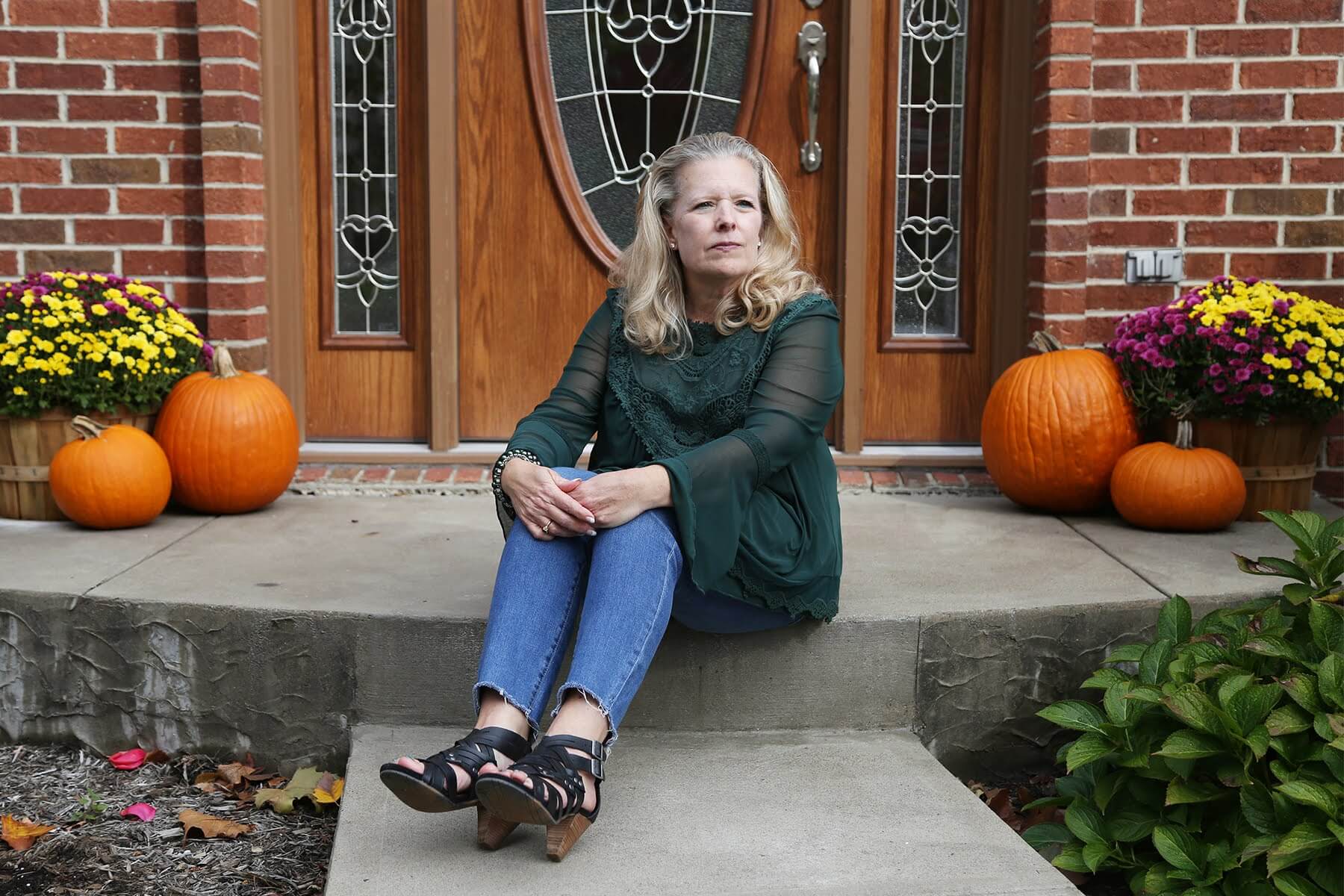
Tina Flowers sits outside her home in Hampton Township in October 2020. (Photo by Ryan Loew/PublicSource)
He was “a typical suburbanite kid,” she would tell crowds of students at the talks she gives about substance abuse. He played football and rowed. He was in the choir and was involved in his church youth group, working summer camps.
Spenser enrolled at Temple University in August 2016. But by that October, he came home. He wasn’t ready for college, he told her. When Spenser got into a car accident not long later, an officer found Xanax in his car.
Tina learned from his family therapist soon afterward that he was using heroin. Tina knew her son drank and used marijuana. But this was different. Heroin users are the kind of deadbeats she’d see loitering around convenience stores, not people like her son, she thought at the time. She didn’t want to tell anyone.
This was a time before Narcan was widely available to everyone, when there were more debates about whether we should keep reviving people who overdose repeatedly, she said. When Spenser finally went in for treatment, she didn’t tell his grandparents why.
“We didn’t know that much about addiction. We were still in the place of saying, ‘Just stop. Just stop,’” she said.
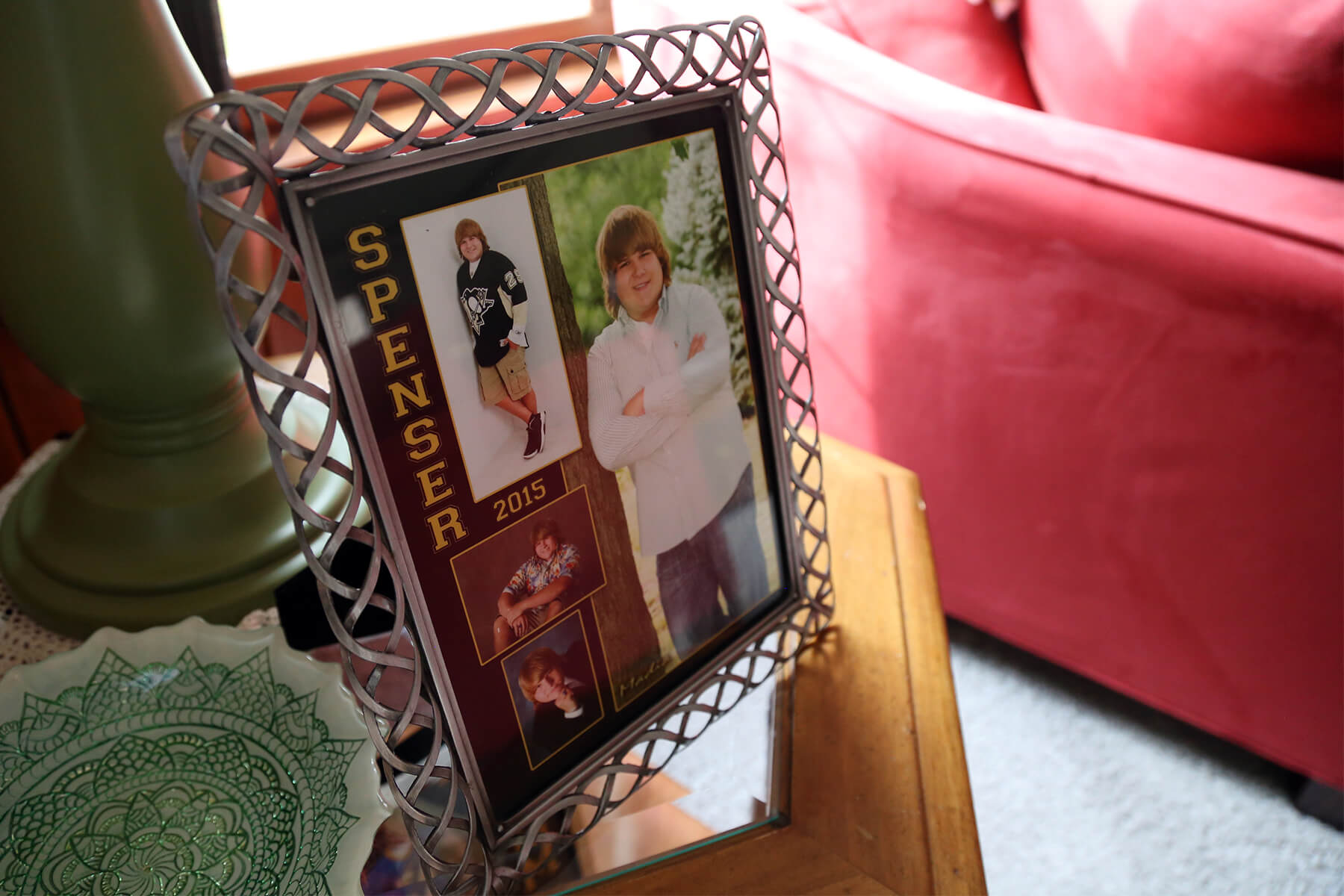
A photo collage of Tina Flowers' son Spenser. (Photo by Ryan Loew/PublicSource)
Spenser overdosed at home the day after Christmas. His family used Narcan to revive him. The policeman knew Spenser and tried to get him to go to detox right away. A few days later, Spenser finally said he would get help. But on Jan. 1, 2017, Tina found him dead from an overdose.
Tina used to give monthly talks on overdosing to school and community groups but hasn’t been able to in the pandemic. “One of my messages is: You can’t keep them at home, you can’t keep them safe,” she said. “When they are that addicted, you can’t keep them safe.”
This was her family’s fourth holiday season without Spenser. The pandemic took away most of the social gatherings that helped her get through it. “I’m sure people assume it should get better,” she said. “It doesn’t really.”
Tina started Spenser’s Voice, a foundation that has raised more than $130,000 for local agencies to provide help for young people with addiction.
“He looks like a normal kid. It can hit anyone,” she said. “That’s my message.”
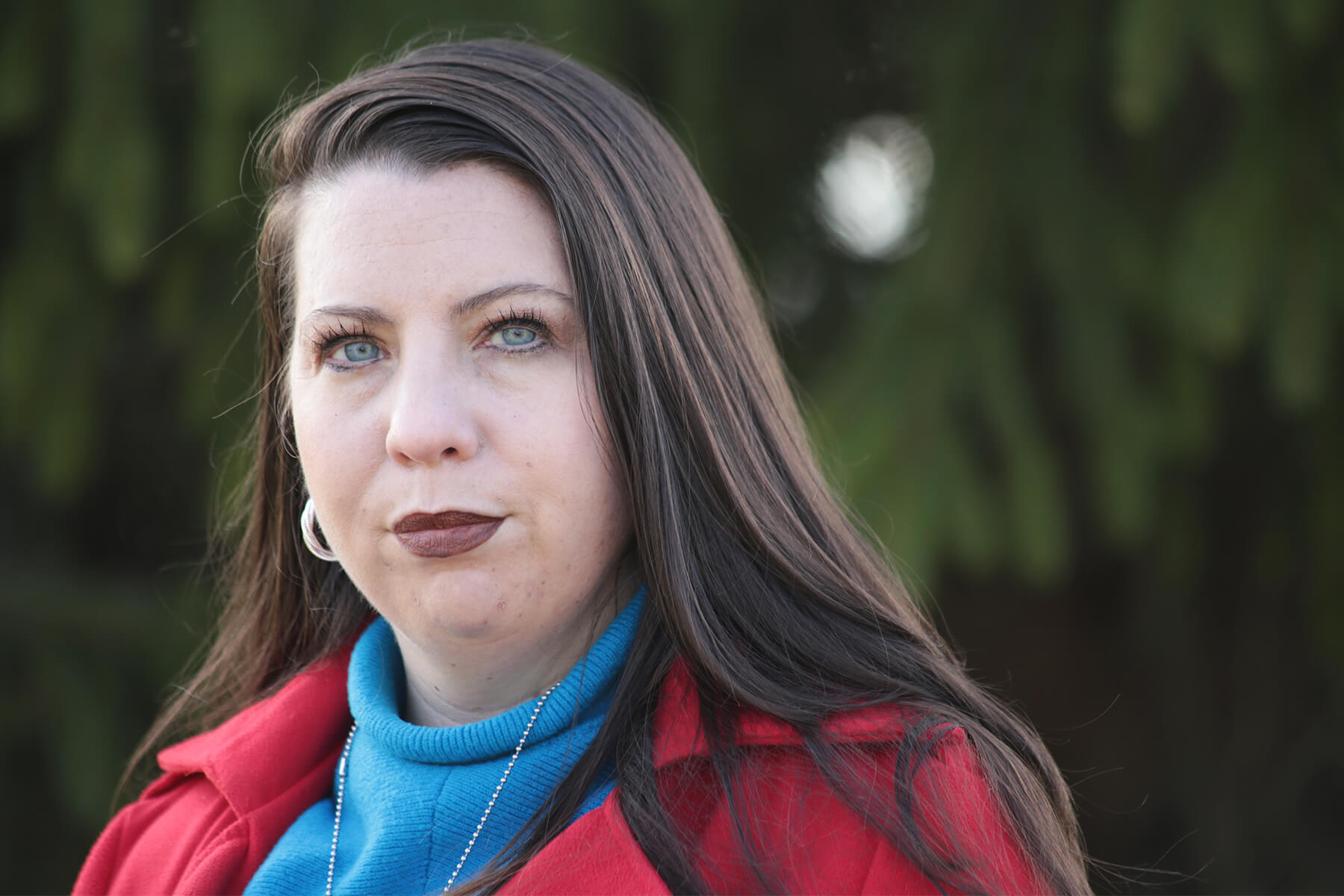
Nicole R. photographed outside her home. She and her husband have fostered 16 children, and all but one has come from parents suffering from addiction. (Photo by Ryan Loew/PublicSource)
The baby has neonatal abstinence syndrome caused by her mother’s cocaine addiction and spent her first four months in intensive care. When she took the baby home, Nicole had to learn to keep tabs on her oxygen levels and give her extra oxygen when the baby needed it.
There are some volunteers at the hospital who hold babies without families, Nicole said, but it’s not as consistent. The baby developed a flat head from laying too much on one side. Nicole didn’t want the baby to have to wear a helmet.
“She tended to look only one way and use toys on one side of her body,” she said.
Her physical therapists had to work remotely but they made progress, moving on to crawling and walking. And, unlike some other babies she’s had in the past, this baby bonded with her family.
In September, Nicole thought there was a chance the baby would go up for adoption, but by January it was clear that the baby was headed for reunification with her birth mother.
During the first months of the pandemic, Nicole didn’t receive many requests for fostering, she said, because many times it’s schools and daycare providers who spot abuse. But it has picked up. They fostered another child in October whose father had overdosed.
“The baby is having a difficult time transitioning back and forth between the two households,” she said of the new baby. “She constantly wants to be held and snuggled as her sense of security is now changing and her routine for the past year is being disrupted.”
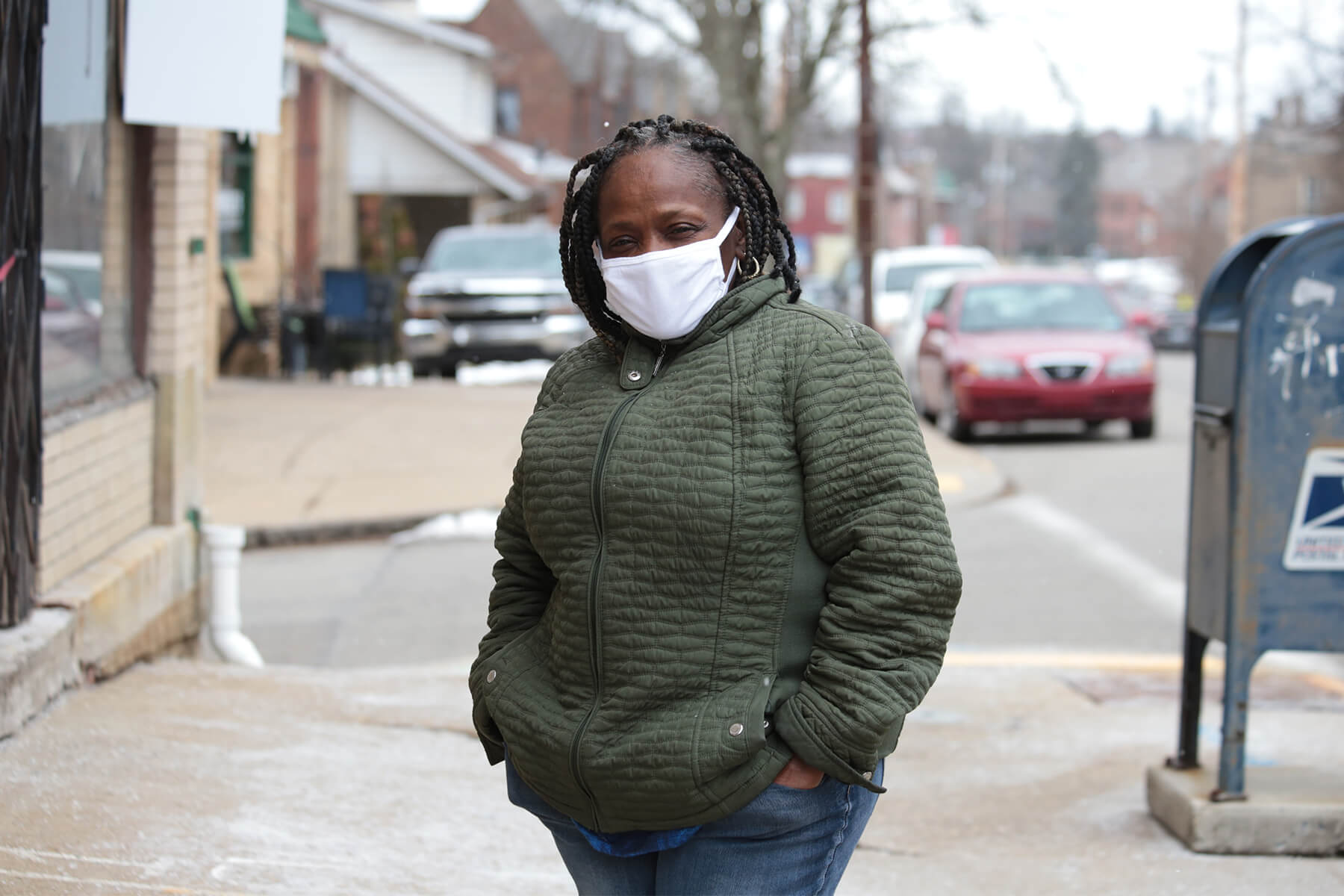
Laura W., outside her home in Carrick. (Photo by Ryan Loew/PublicSource)
Because she has asthma, she immediately thought, “Oh no, I’m gonna die.”
That kind of conclusion might have caused her to turn toward drugs in the past.
But this time, she turned on gospel music in her Carrick home. It soothed her, she said, until she was able to get a test that came back negative.
Laura, 56, said she started using drugs in Erie, where she grew up, to fit in and to block out the pain of a childhood where she was abused and molested. Then three years ago, she found herself homeless after a woman who she thought was a friend put her out on the street. She decided to get help.
But this time, she said, she also had to draw on the strength of God to help her.
“It took a long process, a long time for me, to make a decision to turn my will in my life over to the care of God as I understand him,” she said. “I didn’t think he would do it for me, that he would give me courage.”
Now she’s been able to pay her own rent for two years, she said, and has her own SUV. As a home health aide, she helps a man with depression clean up his home and cooks, cleans and helps another woman with cancer who is prone to falling.
Even before the pandemic, she kept her circle tight because she had to cut people out of her life who were bad influences. Now it’s just her clients, her sponsor and her friends at King of Kings Baptist Ministry. Some of her support has had to move online and over the phone, including a Bible study that she now does through Periscope.
She’s had good days and bad days. Again, she turned to gospel music for strength when she learned one of her two main clients was being sent to live in the hospital and she would lose more than half her income.
“The disease of addiction cannot sit in my life,” she said. “That person is dead and never to return. I have to do all the necessary things not to go back there.”
Oliver Morrison is PublicSource’s environment and health reporter. He can be reached at oliver@publicsource.org or on Twitter @ORMorrison.
This story was fact-checked by Emily Briselli.